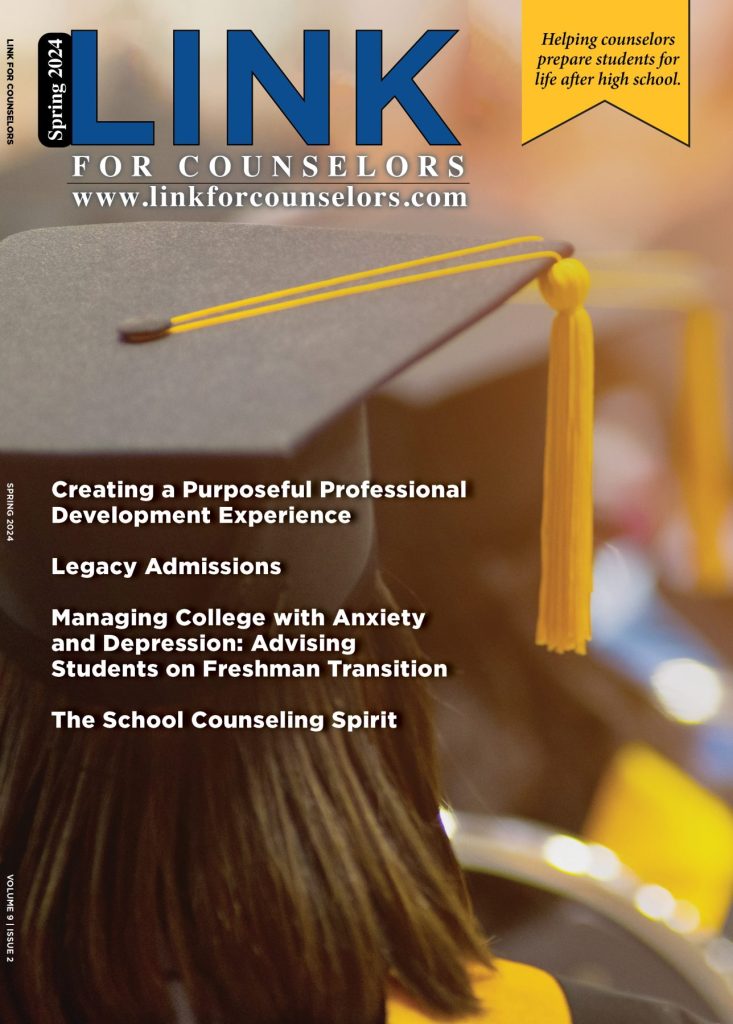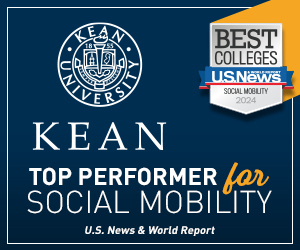COLLEGE COUNSELING NEEDS TO ADDRESS CAMPUS LABOR ISSUES
In my nightmares, all the outreach programs for under-represented and/or first-gen students will become ineffective as tuition soars. Colleges will go out of business as fewer and fewer people can afford to teach there. The American education system will explode in a fireball constructed by corporate greed, and this country will return to a 19th century ethic (and a model without land-grant universities), where only those who can afford it will pursue academics.
Today’s reality is approaching a crisis point. More and more students want to go to college; student debt is mounting higher while faculty pay is declining. And educators – both in public school systems and those who do the bulk of college teaching — are tired of being treated as expendable commodities. Notice all those public school teachers walking out of their jobs in protest? And the demonstrations by graduate students who teach working for unionization? And the collective actions by contingent faculty at colleges and universities all across the nation? It’s no coincidence that these are all occurring simultaneously.
If these teachers’ concerns go unheeded, or if they get meaningless response, and substantial corrective action does not take place soon, this could be the beginning of the end of quality education in this country. My nightmare could become true.
Each year, thousands of promising scholars are driven by practical consideration from academia. Adjuncts, part-time faculty, contingent faculty – whatever they are called, they simply cannot afford to teach under the conditions imposed by many colleges and universities. Additionally, many colleges hire “term faculty” who work full-time but are hired for only one year; they may re-apply for their own jobs or are fired. No, not fired – simply not re-hired! One university has even proposed that people teach for free. Are they joking? As it is, teachers are demoralized, angry, and often feel powerless.
Meanwhile, public school teachers, weary of having to deal with large classes, substandard classroom materials, and pay that in some states is so low that they must take additional jobs to make ends meet, are demanding real change and not lip service.
Schools of education report a decline in enrollment. Of course they do – who wants to be a teacher today? Students see their own teachers struggling financially and are inspired not to follow the same career path. What kind of models are being offered to students?
The persistent and growing exploitation of adjunct faculty is a significant labor issue in higher education with grave moral and academic implications. This is a pervasive problem, nationally.
Where do college counselors come in? Unwittingly, those who advise high school applicants, those who attend college, and those who pay for it are enabling academic labor abuse on a national scale. While parents, students, and their counselors regularly worry about the increasing selectivity of colleges, and the rising cost of attending them, they need to connect this to the labor ethics aspect of higher education. Yes, they are related!
Pay levels for college faculty have been stagnant (and for part-timers, often too low to live on). This is not a new problem – it’s been going on since the 1970s, when adjuncts were nicknamed “freeway flyers” and “road scholars” because they had to teach at several schools in order to earn the equivalent of a full-time salary. Paid by the course, these teachers usually receive no benefits (such as health insurance). While many have the same credentials as full-time faculty, they are paid far less. Sympathetic full-time (but untenured) teachers fear reprisals if they speak out. Today’s classes are larger, contracts are shorter, and salaries remain abysmal.
Counselors, students, and parents need to investigate who is actually doing the teaching at the schools under consideration. They can ask if those teachers receive benefits. But is unlikely that they will get solid information from admissions staff, who are, in general, not prepared to answer questions like these. Consumers will have to do their own research. If they choose not to apply or enroll, they need to tell the college why. Colleges and universities need to understand that their reliance on “cheap” teaching may cost them dearly. Why should students support an unethical system and also subsidize the huge six-figure salaries of administrators?
Yes, strong academic candidates have gotten decent academic jobs, and will continue to do so. But for every person who lands a full-time, tenure-track job, there are probably 20 or 30 consigned to the workhouse that is adjunct or term employment. And yes, long-established schools with generations of assets will continue to flourish. But for every institution like that, there are many that will shrink substantially or close down.
It’s all part of the corporatization that has been creeping over and through higher education systems for the past 20 years. Corporatization in higher education demands teachers at the lowest price. Part-time teachers comprise anywhere between 4% and 72% of an institution’s faculty; at some schools, adjunct faculty account for as many as 40% to 50% of the teaching staff. While some institutions may have low overall percentages of part-time faculty, some of their departments offer undergraduate courses taught primarily by contingent labor. Recent statistics from the US Department of Labor show that if low-paid college instructors worked a 40-hour week for 10 months, their annual salary would still average only $32,000. Contingent faculty make even less.
If we do nothing, this is what will happen: colleges will continue to hire and exploit part-time teachers. There is a seemingly endless supply of cheap-to-employ, bright, idealistic people who love teaching and hope to advance by “getting a foot in the door.” In economic terms, the colleges win. Instead of paying a full-time professor, say, $80,000 a year – plus benefits — to teach four courses a year, they hire two adjunct professors to teach two courses each for $1500 per course, per semester. They have spent only $12,000. At a large school, with a faculty numbering 2000, that’s a lot of money saved. And they can use that money to pay administrators huge salaries, or buy the college more real estate, or install multicolored lights in their fountains.
So how can counselors know if the school they are considering is exploiting its teachers?
The best source of facts is the Common Data Set (CDS), the statistical compilation made by each college or university, usually by that school’s office of institutional research. Some schools are very upfront about their CDS information; others make it extremely hard to find. Compare the numbers of full-time teachers with the number of part-timers. At a university — an institution with both undergraduate and graduate schools — some courses must be taught by TAs. This teaching is part of their training, so a university with a part-time faculty percentage of 20 percent or even 30 percent is not uncommon. But 40% is not healthy — and any higher than that, a red light ought to go off. If it goes to 50% or upward, imagine lights, buzzers, and sirens. Additionally, any college that hires more than half of its faculty on a contingent basis is either in financial trouble or is a questionable employer.
If applicants want to get a quality education without supporting the exploitation of teachers, and without going into huge debt, what can they do? They need to come to us, and we need to go to the colleges and universities. If all counselors act together, we can bring about the economic and social justice that the education industry – for that is what it has become – needs in order to survive.
I just completed my own research (imperfect, I admit, as I did not have any grants or advanced technology at my disposal). First, I tested my own assumptions about employment abuse in higher education – that it occurs mostly in large urban public universities. I began with a sample of 200 colleges and universities — admittedly not random, but I could not look at all 3,000+ institutions of higher learning in the USA. The list is representative of popular schools to which many of our students apply. Significantly, the sample included public and private institutions, large schools and small, both colleges and universities, religious and secular.
I compiled statistics by going into the CDS for each school. I arranged schools in order of the highest number of part-time faculty compared with the number of full-time faculty. What I found was astounding: 67 of the 200 schools had huge numbers of part-time teachers. And 43 of these 67 were not state schools on limited budgets, as I had originally assumed, but private colleges and universities.
Next, I wrote individualized, professional e-mails to the Provosts of all those schools involved (the 67) and gave them a chance to clarify the statistics.
Most schools simply ignored me. That included a state university that has been in the news because one of their adjunct professors was found to be living in a car. Another is one which states in its recruitment brochure that 93% of its teachers are professors – yet with more contingent faculty than full-time teachers, how is that possible? I specifically asked the provost, who chose not to answer.
Only fifteen schools responded, some with quite a bit of detail. One was concerned that the statistics in the CDS did not present the school in the best light. One provost sent me a rather snippy e-mail saying that everything they do is legal. Two university deans actually called me on the phone. We had real dialogue, where I was very upfront about my sympathies for the adjuncts. One administrator even sadly told me that he understood my questions very well – for his spouse is an adjunct.
A couple of administrators pointed out (correctly) that the CDS provides only a “headcount” and not the teaching load. Which kind of part-time teacher – one working full-time elsewhere but teaching one college class, or one teaching one class and working part-time at two other schools to make ends meet — is represented by the wildly varying numbers of part-time teachers at these colleges? The Common Data Set does not say – it does not distinguish. For example, a school might have 100 full-time teachers and 200 part-timers. But if the part-timers teach one class only, one administrator reasoned, then they really count as only 1/3 of a position. I responded that this still meant 200 people are teaching without benefits or security.
I really ought to have asked this: “What percentage of your undergraduate courses are taught by part-time faculty?” The answer will differ from department to department, but this information is not given in the CDS, either. So we and our students, and their parents, must therefore ask colleges this question, and ask for substantiation.
We are the ones who steer applicants to schools. When we look at a school’s website and their “fast facts” we see a graduation rate, the cost of tuition, programs offered, and a student/faculty ratio. But do we see anything about the number of teachers or the conditions of employment? No.
School recruitment representatives must be asked uncomfortable questions. Some colleges may be charging our students high tuition, yet shortchanging them. Yes, it costs a lot to run a campus. But continuing to nurture administrative bloat is not an acceptable way to run an institution of higher learning. Nor is it an acceptable way to run a local public school system or a state system. We already know that counselors’ caseloads average around 400 in public high schools. Our students are supposed to receive quality, individualized college counseling. Counselors, as well as teachers, are expected to do a superhuman job with meager resources. Are the people who teach our students any less deserving of resources? A huge percentage of them do not even receive health benefits!
What public school teachers and what college teachers are going through is connected. Sadly, they are linked by the fact that this country, while saying that education is important, really gives it low priority. There is money for technology in some schools, and there is money for administrators – but is there money for more teachers and therefore smaller classes? Is there money for school supplies? Is there money for new textbooks? Is there money for field trips?
It’s the same with the world food supply. There IS enough food for everyone on this planet – but the distribution system is awry on a huge scale.
Despite creating professional organizations, building awareness in the community, and occasionally striking, teachers, especially adjuncts, have gained little ground in the past 30 years. This lack of progress in the way this country treats its educators — as an expendable resource — is unfortunately consistent with the way education itself is regarded. Education is a very low priority. When state governments have to trim their spending, the first victim is usually education. That’s the result of having a national culture that venerates athletes and pop stars over teachers.
The current groundswell of protest may lead to real change. Teachers from many states are walking out of their schools to demand better conditions. Graduate students at numerous universities are unionizing and organizing for improved benefits. Thousands of adjuncts, also, are joining unions. All of this offers hope. But only unified action by all academic labor, nationwide, can save higher education.
If these efforts do not achieve true and just change in our nation’s public schools and institutions of higher education, expect a continuing decline. More teachers will leave the profession, fewer students will aspire to become teachers, and classes, from kindergarten to post-secondary, will get even larger. Only those who can afford it will even go to graduate school. Adjuncts will quit in disgust, courses will have no teachers, and colleges will have to retrench or close down. Students may pursue degrees, but not real education.
Those of us who were nurtured by caring teachers, and those of us who still care about students, are filled with dread. We counselors must speak out, collectively, before higher education becomes as inaccessible to most as it was 150 years ago.
Jane S. Gabin, a member of NACAC and SACAC, received her PhD from UNC-Chapel Hill. She has taught high school and college classes, and has given presentations at NACAC, NYSACAC, and NJACAC conferences. For ten years she worked in undergraduate admissions at UNC-Chapel Hill, and for more than a decade worked in college counseling in the NYC metro area, most recently at the United Nations International School (UNIS). She is now an Independent Educational Consultant who can be reached at janesgabin@yahoo.com




